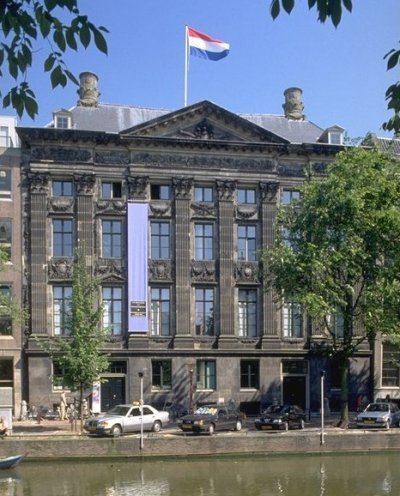Website www.knaw.nl | ||
 | ||
Formation 8 May 1808; 208 years ago (1808-05-08) Formerly called Royal Institute of Science, Letters and Fine Arts | ||
The Royal Netherlands Academy of Arts and Sciences (Dutch: Koninklijke Nederlandse Akademie van Wetenschappen, abbreviated: KNAW) is an organization dedicated to the advancement of science and literature in the Netherlands. The Academy is housed in the Trippenhuis in Amsterdam.
Contents
In addition to various advisory and administrative functions it operates a number of research institutes and awards many prizes, including the Lorentz Medal in theoretical physics, the Dr Hendrik Muller Prize for Behavioural and Social Science and the Heineken Prizes.
Main functions
The Academy advises the Dutch government on scientific matters. While its advice often pertains to genuine scientific concerns, it also counsels the government on such topics as policy on careers for researchers or the Netherlands' contribution to major international projects. The Academy offers solicited and unsolicited advice to parliament, ministries, universities and research institutes, funding agencies and international organizations.
Members and organization
The members are appointed for life by co-optation. Nominations for candidate membership by persons or organizations outside the Academy are accepted. The acceptance criterion is delivered scientific achievements. Academy membership is therefore regarded as a great honor, and prestigious. Besides regular members, there are foreign members and corresponding members. Since a new membership system was introduced in 2011 there will be no new corresponding members. Each year a maximum of sixteen members is appointed to the Academy.
The Royal Netherlands Academy of Arts and Sciences has long embraced the entire field of learning. The Royal Academy comprises two departments, consisting of around 500 members:
Both departments have their own board. The departments, in turn, are divided into sections. The highest organ in the Academy is the general meeting of members, the united meeting of both departments. The president was Frits van Oostrom until 1 May 2008, after which he was succeeded by Robbert Dijkgraaf. Both van Oostrom in his leaving address and Dijkgraaf in his inaugural address have voiced their worries about the low level of funding in science in the Netherlands compared to almost all other western countries. In March 2012, Hans Clevers was elected president and took office in June 2012. In 2015 he was succeeded by José van Dijck.
History
During the French occupation of the Dutch Republic, it was founded as the Koninklijk Instituut van Wetenschappen, Letterkunde en Schoone Kunsten (Royal Institute of Sciences, Literature and Fine Arts) by Lodewijk Napoleon on May 4, 1808. In 1816, after the occupation had ended, it was renamed to Koninklijk-Nederlandsch Instituut van Wetenschappen, Letteren en Schoone Kunsten. In 1851 it was disbanded and re-established as the Koninklijke Akademie van Wetenschappen and in 1938 obtained its present name. Since 1812 the Academy has resided in the Trippenhuis in Amsterdam.
The institute was awarded the Gouden Ganzenveer in 1955.
Research institutes
The following Research institutes are associated with the KNAW:
The Netherlands Institute for Neuroscience (NIN) was established in 2005 as a merger of the Netherlands Institute for Brain Research (NIH, established in 1909) and the Netherlands Ophthalmic Research Institute (IOI, established in 1988).
Young Academy
De Jonge Akademie (The Young Academy) is a society of younger science researchers, founded in 2005 as part of the KNAW. Ten members are elected each year for a term of five years; members are scientists between 25 and 45 years old and are selected for a record of excellence in their research. It was modelled after the similar German Junge Akademie, and both of these academies in turn were used as models for the Global Young Academy.
